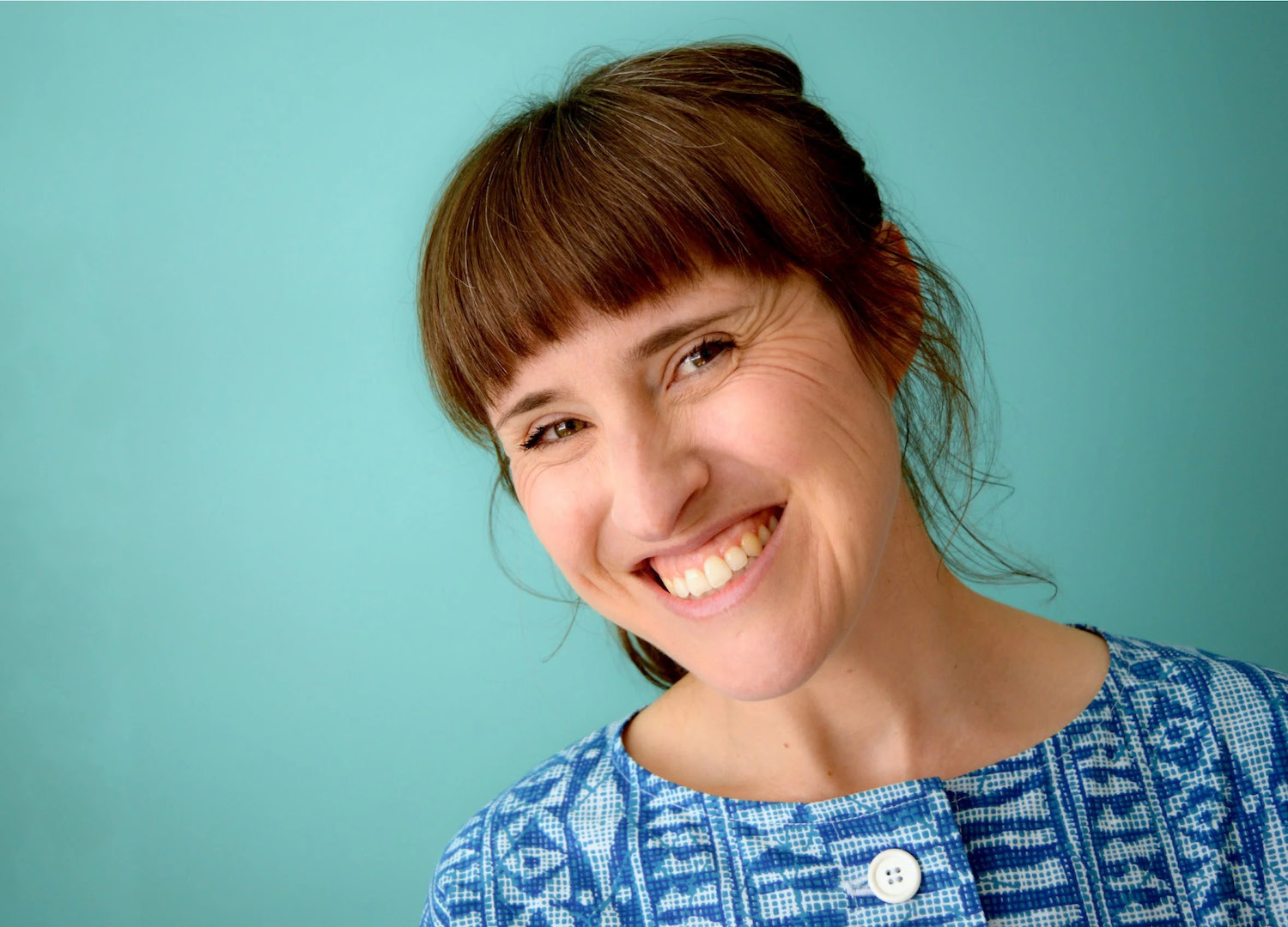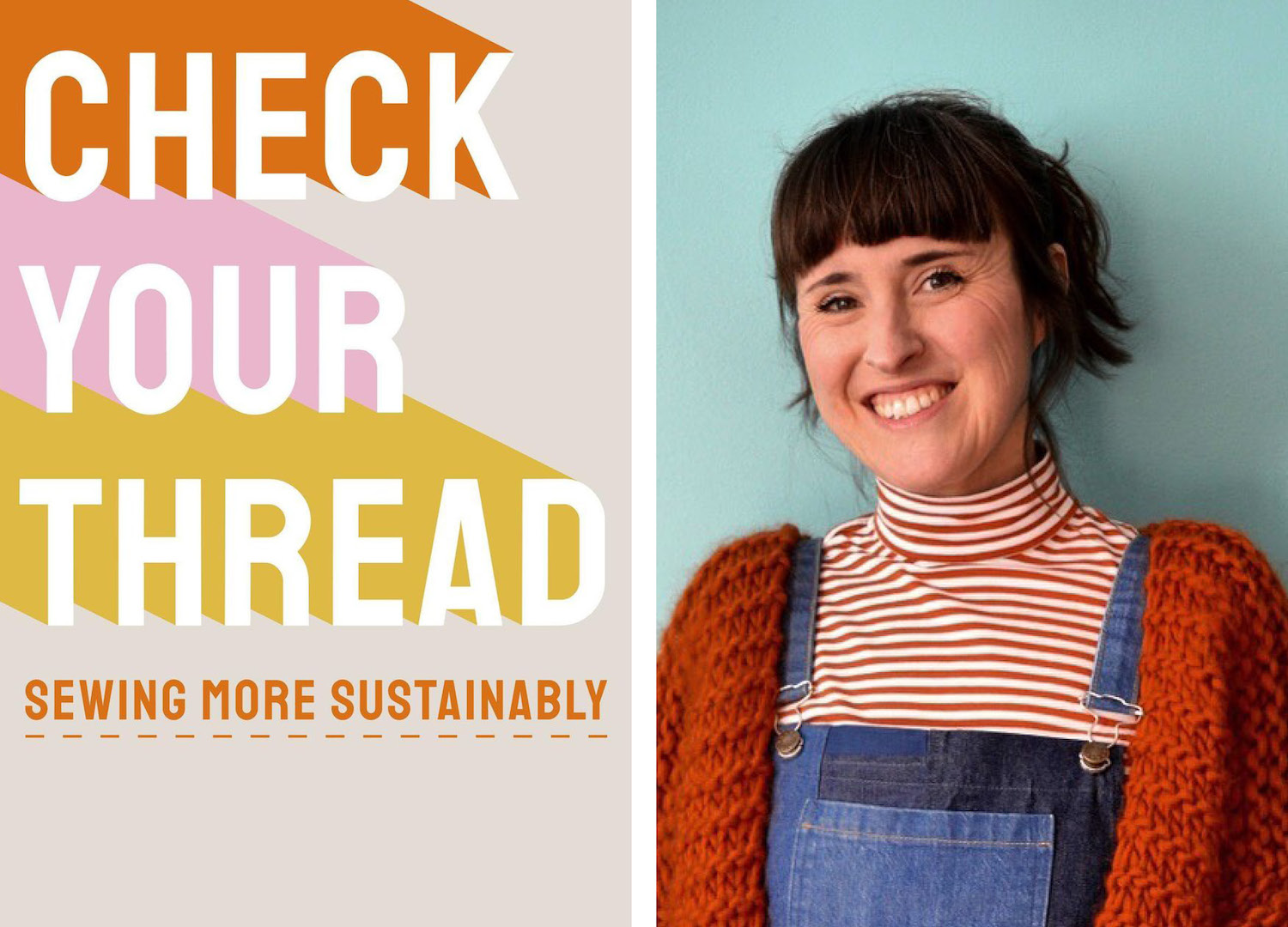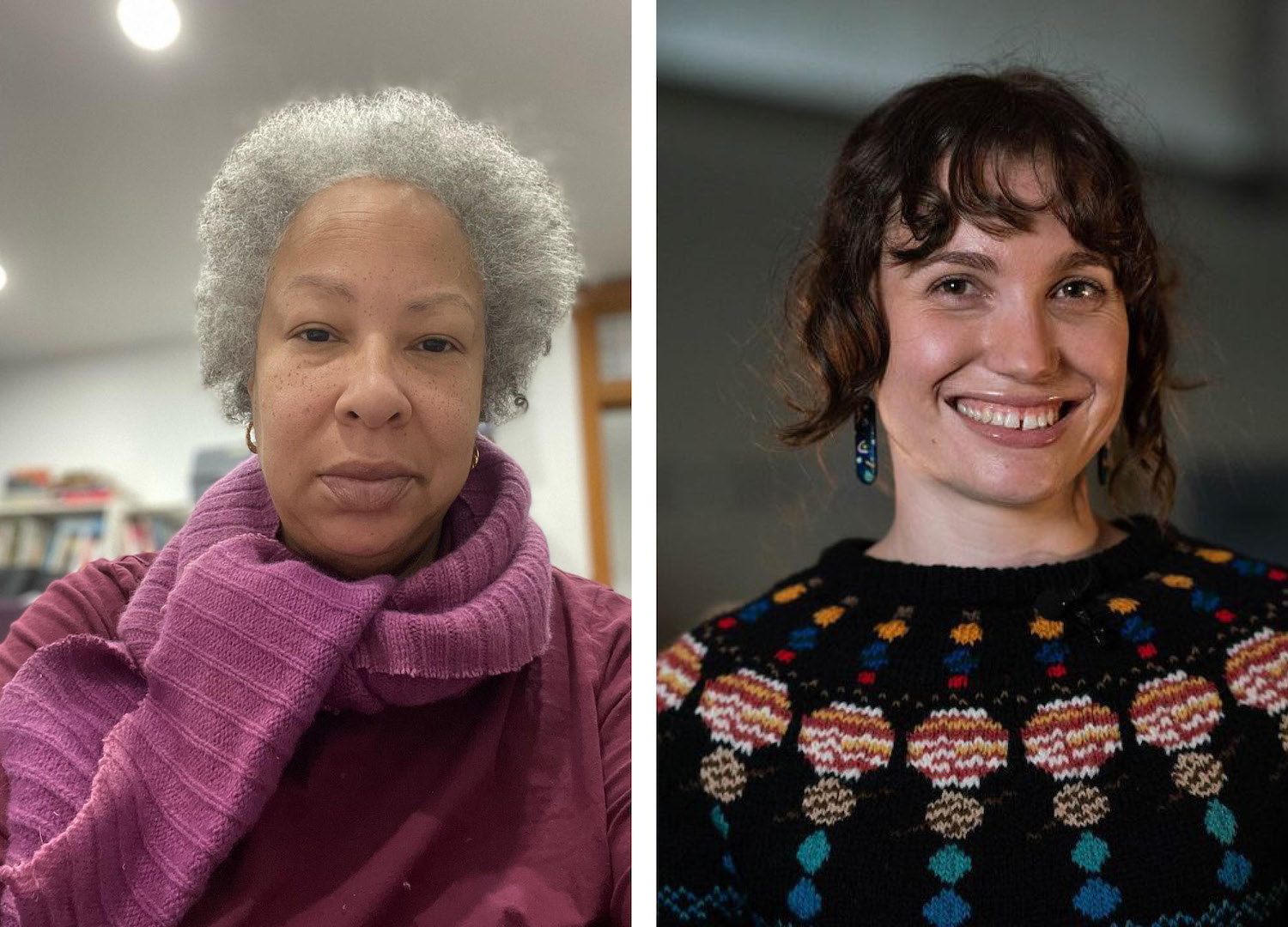
Five Top Tips for Sewing Sustainably from Check Your Thread’s Zoe Edwards
You may recognise Zoe Edwards as the founder of Me Made May, profiled in such luminous publications as Peppermint magazine, as a longtime shimmering fixture in the sewing blogosphere at So, Zo What Do You Know?, as the author of Mend It, Wear It, Love It, published in 2021, or perhaps from the esteemed podcast Check Your Thread, a weekly exploration of how to sew more sustainably.
In each episode, Zoe and her guest nerd out about garment sewing, while discussing ideas and useful tips for how to reduce its impact on the environment. With over 83 episodes and a bevy of incredible guest stars, there’s plenty of inspiration, innovation and fun to be had. We sat down with Zoe to learn more, and find out the best tips and tricks for sustainable sewing she’s discovered so far.

What inspired you to start your podcast?
I’ve been blogging about sewing since 2008, so unpicking (excuse the pun!) and communicating my thoughts, feelings and motivations around sewing has become a huge part of my sewing process. It is often as important (or even more so) to me as the finished items. The topics of sustainability and ethics as they relate to sewing became a recurring theme on my blog, and it’s remained on my radar. As the years passed, I found more and more businesses and individuals doing interesting, inspiring things around sewing and sustainability. I’d save the articles and bookmark the links, with a plan to do something with them all someday.
My relationship with podcasts began about 10 years ago. I started listening to This American Life during a stint of working alone as a dressmaker, and I very quickly became obsessed! Podcasts have kept me company during long commutes to teach sewing classes. At other points when my days were spent parenting very young children, they kept me connected with a wider world, when mine felt very narrow.
I guess something eventually clicked and all of this came together. Blogging was on the wane. The limitations of Instagram for communicating complicated ideas were clear. The list of fascinating people I desperately wanted to learn more about, kept growing. [I thought], ‘I should start a podcast!’ But it’s not that easy, of course. It actually took two years of sitting with and developing the idea before the Check Your Thread was born. Not to mention figuring out how to actually make one!
Why is sewing sustainably such an important question for you?
I spent a chunk of last year working on my personal manifesto – my vision, mission and values – so I am now at a point where I can answer that question clearly! I believe that we need to live in a world where the impact on the environment is factored into every decision. My personal passion and sphere of influence is sewing, which is why I’ve made that my focus. I also know that, by starting to sew more sustainably, it’s then possible to do lots of other things more sustainably, and that these ideas and approaches can spread out into many areas of life.
I think it’s misleading and potentially damaging to label anything ‘sustainable’, and instead I prefer the phrase ‘more sustainable’, which is a distinction I’ve explored on the podcast.
Thankfully, a lot of people are starting to acknowledge and understand the damage that the textile and fashion industries have on the planet and its people. However, I think a lot of sewers have yet to make the connection between their own sewing activities and the damage caused by the production, processing, transportation and disposal of textiles and other materials. We sewers are not magically ‘sustainable’ because we choose to do the stitching part of garment-making ourselves. I also think it’s misleading and potentially damaging to label anything ‘sustainable’, and instead, I prefer the phrase ‘more sustainable’, which is a distinction I’ve explored on the podcast.
What are your personal top five tips for sewists looking to practise more sustainability?
ONE // Always aim to make clothes that fit your personal taste, lifestyle requirements and body as best you can. That will give your garments the best shot at a long and happy life with lots of wear. It is the best way to honour the time, energy and resources that went into the garment, not to mention your own labour.
TWO // If you already own some lengths of fabric, or unwanted garments that aren’t suitable for donation, try to start more of your projects using what you already own.
THREE // Only buy new fabric if you have a pretty clear idea of what you’re going to make with it. You’re not bound to that idea, of course, but a fabric purchase will be less likely to languish in your stash for years if you had a vision for it initially. It’s ok to walk away from a lovely fabric if you don’t have an idea of what you’d make from it. I promise you, there’s always more fabric!
FOUR // Catalogue the fabric and patterns you own, and keep notes of your project ideas. Whether you prefer analogue, digital or a mix, knowing what you already have is super useful.
FIVE // If a new sewing pattern or style trend is suddenly everywhere, take a breath before jumping on board. Check out ‘Episode 64: Sewing Trends More Sustainably‘ for advice on how to decide if a trend is worth your time and the resources to make it.
Above all, keep in mind that sewing more sustainably doesn’t have to be experienced as being restricted or deprived. It can be a source of additional creativity, fun, connection and fulfilment.
Above all, keep in mind that sewing more sustainably doesn’t have to be experienced as being restricted or deprived. It can be a source of additional creativity, fun, connection and fulfilment
Do you have any particular favourite episodes or guests?
This may be a predictable answer, but I learn something from, or am influenced by, every person I speak to for the podcast. Everyone, whether they are a ‘big name’ in the sewing community, or someone with two Instagram followers, can have something to contribute to the topic: an interesting perspective or experience to share.
That said, one regular contributor to the podcast is a wonderful woman named Shams el-Din Rogers who is a textile activist living in North America. Shams brings such intelligence and nuance to every topic she agrees to explore with me and regularly connects aspects of social justice, feminism and inequality to the discussion that I hadn’t previously considered. I swear my mind is opened a little further every single time we talk, I’m so grateful she chooses to work with and support me as she does. ‘Episode 77: Stashes and Spaces with Shams el-Din Rogers‘ is a good one to check out.

GUESTS ON THE POD INCLUDE TEXTILE ACTIVIST SHAMS EL-DIN ROGERS (LEFT) AND SPACE SCIENTIST RACHEL KIRBY (RIGHT)
What are some of the best tricks for sustainable sewing you’ve picked up from your guests?
Honestly, I learn something from every single person I speak to, but these are the ones that come to me initially. These aren’t ‘tricks’ as such, I see them more as lessons:
Guy introduced me to the idea of ‘decommissioning clothes’: an interesting take on harvesting any useful elements from garments that can no longer be worn.
Julia taught me to turn the plastic cones on your overlocker the other way up so your thread cones will sit securely.
Shelly explained the concept of ‘highest level of possible use’, and explored with me how that can relate to sewing.
Judy and Rachel both showed me how placing restrictions on material sourcing can unlock new levels of resourcefulness and fulfilment.
Keep asking questions, don’t assume you know and keep doing the work that makes change happen incrementally.
Kim encouraged me to develop my own ‘manifesto’ (my vision, mission and values) that I can hold every decision up against to work out if it’s the right course of action to take.
Bella reminded me that it’s entirely possible, and often desirable, to ‘go back in’ to a finished garment and rework it in some way. Whether that’s to correct something that always annoyed you about it, or simply to freshen it up.
Shams teaches me a different perspective every time we talk. However, the biggies are to keep asking questions, don’t assume you know and keep doing the work that makes change happen incrementally.

